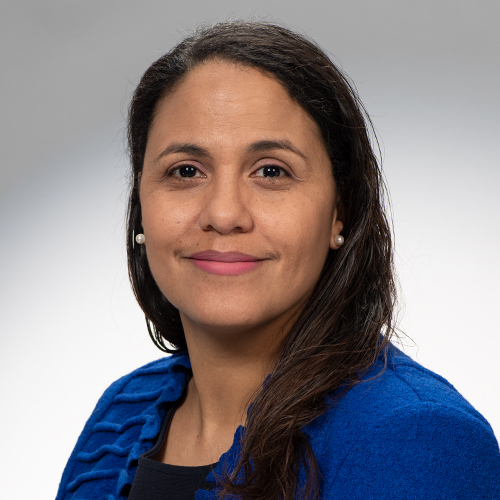Anti-racism chatter: All of our business

The University of Eastern Finland is taking part in Minna Canth’s Day, and the Week Against Racism. The university has also finalized its new Gender Equality and Equal Opportunities Plan 2025-2026, which will be launched during the UEF Equality Day on 20.03.2025.
Step into this space and take a front-seat row to an exchange between Sami Tanskanen and Roseanna Avento, where they explore the Week Against Racism. Sami and Roseanna both serve on the UEF’s Gender Equality and Equal Opportunities Committee.
Roseanna
Hello Sami, what’s this “Week Against Racism” and why are we recognising it at UEF and in Finland?
Sami
Hello Rosi! And thanks for asking! The “Week Against Racism” in Finland coincides with the International Day for the Elimination of Racial Discrimination on March 21st, which is a day observed by the United Nations as a response to the Sharpeville massacre of peaceful protesters by police in apartheid South Africa, 1960.
Nowadays, the “Week against Racism” is coordinated nationally, and often regionally, by the Finnish Red Cross, usually with a changing theme. This year, the theme is “intervention”. This means that institutions, all around Finland, that are taking part in the week are not only encouraged to spread awareness but, also to offer tools on how to intervene when faced with or witnessing a hateful or racist incident. The website of the campaign is found here, and you might have noticed some campaign materials being distributed in UEF channels as well.
Rosi
Thanks Sami, for that explanation. I’ve just only recently noticed this “Week Against Racism” over the last few years, and I had to wonder what the story behind it was and for how long it’s been held.
Sami
Indeed! Last December, I had the pleasure of listening to a panel discussion, featuring Johanna Matikainen, Development Manager for the Finnish Red Cross, who has much experience of antiracist work in Finland. Johanna aptly noted that work against racism is not a new phenomenon, and that antiracist work in Finland goes back at least 50 years, if not more. We might have used different terms, but it is a common stereotype that racism and antiracism are somehow novel concepts that coincide with Finland becoming more culturally diverse. That isn’t necessarily true at all, especially when recognising the relatively long human rights campaigns and histories of the Finnish Sami, Roma, Jewish and Afro-Finnish communities.
Anyway, I already mentioned that the “Week Against Racism” is a great way for different institutions to spread awareness on racism and antiracism. It’s equally important to recognise the role that different social institutions, including education, may have on perpetuating and preventing racism in its different forms (ideological, structural/systemic and everyday racism). But coming back to you, Rosi. What do you think about our role at universities and in higher education?
Roseanna
Oh, I think universities and higher education in general have a huge role to play in combating racism. After all, universities are institutions of learning and that’s where I would start: with education. Universities can help educate their students and staff, and the general public about racism. I do believe, UEF has (had) a course on the Basics of Antiracism (in Finnish):, but this doesn’t seems to be provided anymore. Perhaps this could be offered again, and even redesigned as a self-paced course? Universities also do a lot of research on racism. This research could be made more visible and communicated more widely to the public and stakeholders.
Sami
Thanks for your input, Rosi! As a highly multidisciplinary research university that already publishes excellent research on the impacts of racism and discrimination on, say, health, environmental conflicts, society and education, I do hope we will be able to educate people on these topics in the future as well!
Roseanna
I do hope so. I also think we also have a huge responsibility to include antiracism actions in our everyday activities at UEF. This, has indeed, been considered in our new Gender Equality and Equal Opportunities Plan, which also points out that we need to do more in terms of identifying racist actions.
Universities are a bit passive and reactive in this area, actually. Only after something occurs, is when a statement is made. These statements are usually to the tune of “We have zero-tolerance for racism”. Well, to a person facing racism, this doesn’t really mean much. At best, one gets a message of “we offer support”, but this support is really just an offer for “discussion support” with a medical professional. While this is important, since racism can cause psychological trauma and it’s important for victims to receive support, I find this doesn’t really address the problem. To be very blunt, a victim could interpret this as “I’m a victim of racism and I should seek medical support? What about the aggressor?!”
If a university has zero-tolerance towards racism, and a racist action occurs affecting a student or a member of staff, what are the concrete actions the university takes to combat racism. Very often, the response is that we’re dealing with this internally but there’s really no information on what that “internal dealing” is. While on the one hand, we have to understand there are privacy and confidential issues involved, but on the other hand, the accountability of the university to the victim and the public is left unaddressed. If one makes a criminal report, there is usually information given by the police on the repercussions or non-repercussions, which does bring closure. But how would you, Sami, advise universities to deal with this contradiction?
Sami
Rosi, I think you highlighted an excellent point when it comes to the theme of this year’s “Week Against Racism”: intervention. The goal is to spread awareness about antiracist interventions, but in larger organisations and institutions, these interventions are often internal and confidential – and thus difficult to disseminate. However, having antiracist measures and anti-harassment policies in place and being able to communicate their existence efficiently is a key issue for an inclusive university. I believe a lot of effort has been put into this, but of course, our work is never finished.
But to answer your question, Rosi, I remember an excellent analysis by Anaïs Duong-Pedica published on the Raster-network (Anti-Racist Research Network in Finland) in 2018, juxtaposing zero-tolerance policies and actual institutional interventions in higher education. I believe the analysis is still extremely relevant today. Applying a ‘zero-tolerance policy’ is seemingly a common way to communicate to external stakeholders (especially parents in the case of primary educational institutions) about how the institution takes racism or discrimination seriously. However, time has shown that these same institutions have in reality, lacked practical measures and anti-discrimination processes that a zero-tolerance policy would indicate. I think this is a key example of the “passive-reactive” approach that I would argue has been historically prevalent in Finnish universities.
This is one of the reasons why I am happy with how our current “Gender Equality and Equal Opportunities Plan” focuses not on applying a ‘zero tolerance mission statement’ but, rather, laying out goals for a university environment where there are measures in place to “actively purposefully intervene in all types of harassment, racism, bullying or inappropriate behaviour”. The plan enables us to continue developing these processes to ensure good communication as well as closure, as you pointed out.
Roseanna
Sami, I’d like to go back a bit to the point you made, regarding Johanna Matikainen’s comments that anti-racism work in Finland goes back at least 50 years or more. That is so interesting! Is there somewhere we can read more about this? I think we can always learn from history! It’s apt we are discussing these issues together on Minna Canth’s Day / Day of Equality, I have to say that Minna Canth is one of my role models. Think! She was talking about discrimination in the 1800s and if you read her writings, you’d think she were writing about today’s society.
Sami
Exactly! Let’s bring history back in! Omitting history is a disservice to society and to the extremely interesting history of human rights activism of ethnic and religious minorities in Finland in the past. My favourite book recommendation on this topic, now, is the popular science book edited by Miriam Attias and Panu Artemjeff (full disclosure: both friends of mine!) called “Historiat ja väestösuhteet (Histories and ethnic relations)”, 2024. The book, in Finnish, brings together some of the histories of Finnish Roma and Sami peoples, Tatars, Jewish people, Karelians, gender and sexual minorities and Afro-Finns and the activism and social movements many groups engaged in to achieve equal human, social, religious and economic rights in Finland. The chapters in the book start from the beginning of the 20th century, actually! So that’s much more than over 50 years ago. The editors note the following: “If we do not know anything about history, we may consider certain questions and social issues that have once already been solved as novel – and thus difficult to solve [again]. And if we only have one perspective on history to go on, we are not able to derive and learn everything that we could from it.” (Attias, M., Artemjeff, P., eds. 2024.)
Roseanna
Thank you, Sami! And now that you mention that the book includes Afro-Finns, I am taken back to a documentary that was screened by Yle years ago, called “Afrosuomen Historia (Afro-Finnish History)”. It included a story about Rosa Emilia Clay, a Namibian lady that came to Finland in the late 1800s as a servant of a Finnish missionary couple, also featured here. She ended up as a teacher – around Kuopio- and also lived around Tampere, before she eventually emigrated to the US and married a Finnish man there. The racism Rosa faced was horrendous; she was even forced to perform at mission fundraising events- sort of like a circus animal. Rosa, being a teacher in those times, is something I wonder about, especially considering the racism she encountered. Her ’being made to perform’ is also akin to the role that token representatives have to take, for example the BIPOC folk that are featured in organisation brochures and marketing to demonstrate diversity, with always the same faces on exhibit.
Sami
That is so interesting, Rosi! I have heard of Rosa Emilia Clay’s story, but I didn’t know she worked as a teacher around Kuopio! I believe that in addition to history, locality is also important. Not forgetting the third mission of the university –to engage and interact with surrounding society and promote the social impact of science and art. At UEF, our surrounding society has a rich history, as you mentioned. And when it comes to Joensuu, I can’t help but give another book recommendation, which is actually found in our campus libraries and UEF Repo at this very moment. This is the popular science book “Meille saa tulla (You are welcome), 2010” edited by (our very own) Tiina Sotkasiira, Päivi Armila and Jussi Ronkainen. The book, in Finnish again, offers local Joensuu-based perspectives to racism and antiracism from the eyes (and pens) of experts from different social institutions, ranging from the police, to NGOs, companies, educational institutions, municipal services and other sectors. I think the book is a great example of how universities can engage in their third mission with surrounding society on difficult issues such as racism. One of the main messages of this book is that antiracism can be difficult if done alone – thus promoting networks, collaboration and integrating antiracism into the everyday lives of normal people as the way forward. This also means that no individual, especially BIPOC individuals, should be given the responsibility to go at it alone, and solve the “racism question”. As the book exemplifies, antiracism truly is “all of our business”.
Book exhibitions at the UEF Campus and online
This year’s “Week against Racism” book exhibitions at the UEF campus libraries highlight research on racism from various perspectives. The title of the exhibition is ”Act against Racism.” You can visit the physical book exhibitions until the end of March at the Joensuu and Kuopio campus libraries. The virtual book exhibition can be found on UEF Primo.
Authors

Sami Tanskanen
Project Coordinator
Department of Education and Psychology, University of Eastern Finland
Sami Tanskanen serves as a Project Coordinator at the School of Educational Sciences and Psychology in the Philosophical Faculty. With a strong background in educational and cultural sustainability, Sami is involved in several impactful projects, including the HEART project, which focuses on protecting intangible cultural heritage through transformative learning in community art education. Sami is also actively engaged in promoting multiculturalism and social cohesion in the Joensuu region. He works with various organizations such as the Joensuu Multicultural Association (JoMoni) and Joensuun Setlementti and has worked on various initiatives aimed at fostering positive intergroup relations e.g. through the Ministry of Justice, and his work aims at bridging cultural gaps and supporting the integration of international students in Eastern Finland. Sami is passionate about creating inclusive environments. Sami is the recipient of the UEF Equality Award 2025.

Roseanna Avento
Global Development Manager
Development Services, University of Eastern Finland
Roseanna Avento serves as Global Development Manager in the Development Services unit at UEF. With a background in marketing entrepreneurship, environmental sciences and development studies, her work has revolved around creating equitable opportunities and inclusive environments and partnerships globally to enhance the Sustainable Development Goals.